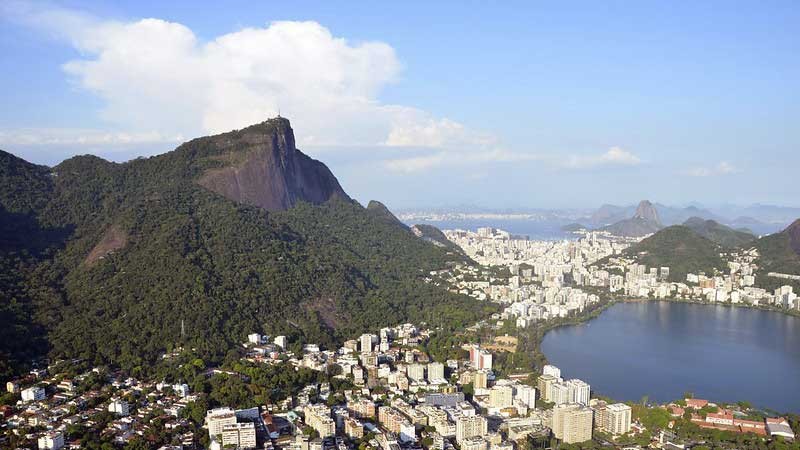How can cities prepare for the increasing intensity of extreme weather events?
New article published by Climate Hub Rio analyzes the climate resilience work of the cities of Rio and New York

The climate emergency is one of the biggest challenges facing humanity. Its range of impacts affects everyone everywhere in the world, however, in an unequal way. With the risk of climate collapse, socioeconomic vulnerabilities increase, and the need for adaptation actions in territories becomes more imminent.
In Latin America and the Caribbean, 81% of the population will live in cities by 2050, according to the latest report released by UN-Habitat, and according to the Brazilian Institute of Geography and Statistics (IBGE), this rate reaches 85% in Brazil. Cities are responsible for approximately 70% of the world's greenhouse gas emissions and are also widely impacted by the consequences of these emissions, associated with disorganized urbanization processes and socioeconomic inequalities.
In recent years, Rio de Janeiro and New York have assumed a relevant position in disaster risk management. However, despite efforts, climate science highlights the need for constant improvement. The storms that have caused problems and public concerns for both cities will likely worsen as the planet continues to warm.
Climate Hub Rio's new article "How can cities prepare for the increasing intensity of extreme weather events?" (in Portuguese) warns that the climate emergency is one of humanity's greatest challenges, especially because it accentuates socioeconomic vulnerabilities and increases the need for adaptation actions in territories. The summer of 2023 in the northern hemisphere – influenced by the El Niño phenomenon – was the hottest in history since monitoring began, according to scientists from the Goddard Institute of Space Studies (GISS) at Columbia University in partnership with the North American Space Agency (NASA).
According to the article, estimates of global losses from climate-related disasters have increased since 1980, from a few billion dollars to more than $200 billion. In Brazil, between 2013 and 2022, four million people were directly or indirectly affected by events related to climate change.
Since 2021, the city of Rio has invested R$2.1 billion in climate resilience actions, such as the Summer Plan 2023/2024. The set of initiatives was prepared by more than 30 municipal bodies, including secretariats, public companies, and sub-prefectures, totaling 308 actions during this government and giving the municipality a historic record for desilting in 2023.
The Rio Operations Center (COR) is mentioned as an example of coordination as it brings together representatives from various departments and public administration bodies, including the state government, to guarantee the city's daily operations 24 hours a day, seven days a week. Today, there are 3,500 monitoring cameras in the city. The municipality also contracted a Monitoring and Alert system for Atmospheric Discharges and Severe Storms. It is also the municipality in the country that has two of its own meteorological radars. Another crucial aspect of COR is communication with the population to warn about the possibilities of extreme events and systemic shocks in urban routine, which allows the people to be prepared.
"Rio de Janeiro is one of the best-prepared cities in the Global South to adapt to climate change. But that's no reason to be complacent. The planet is warming faster than scientists predicted. Cities must advance resilient strategies that protect their citizens, especially those who are most vulnerable", says Thomas Trebat, director of Columbia Global Centers | Rio de Janeiro.
The authors of the article, Thomas Trebat, Camila Pontual, and Laryssa Nunes, analyze Rio's Summer Plan 2023/2024, which integrates prevention measures and prioritizes areas most susceptible to the effects of climate change, in addition to urbanization.
"The new normal is to have more frequent and stronger extreme weather events. Cities need to be better prepared to deal with this new reality. Operational planning actions such as COR and Rio's Summer Plan are good examples that can be replicated", says Camila Pontual, climate program manager at Columbia Global Centers | Rio de Janeiro.
The conclusion of the article states that cities that invest in formulating adaptation and urban resilience actions will be better able to deal with the impacts of the climate emergency. The authors issue a warning: few cities have done their homework. According to the article, a 2022 United Nations climate report stated that of the US$384 billion in financing invested in urban centers in recent years, only 10% was allocated to low-carbon, resilient urban development.
"Preparing cities to receive increasingly intense extreme weather events requires considerable investment on the part of local governments. However, inaction generates a much higher cost", says Laryssa Nunes, program assistant at Columbia Global Centers | Rio de Janeiro.
Read the complete article here (in Portuguese).